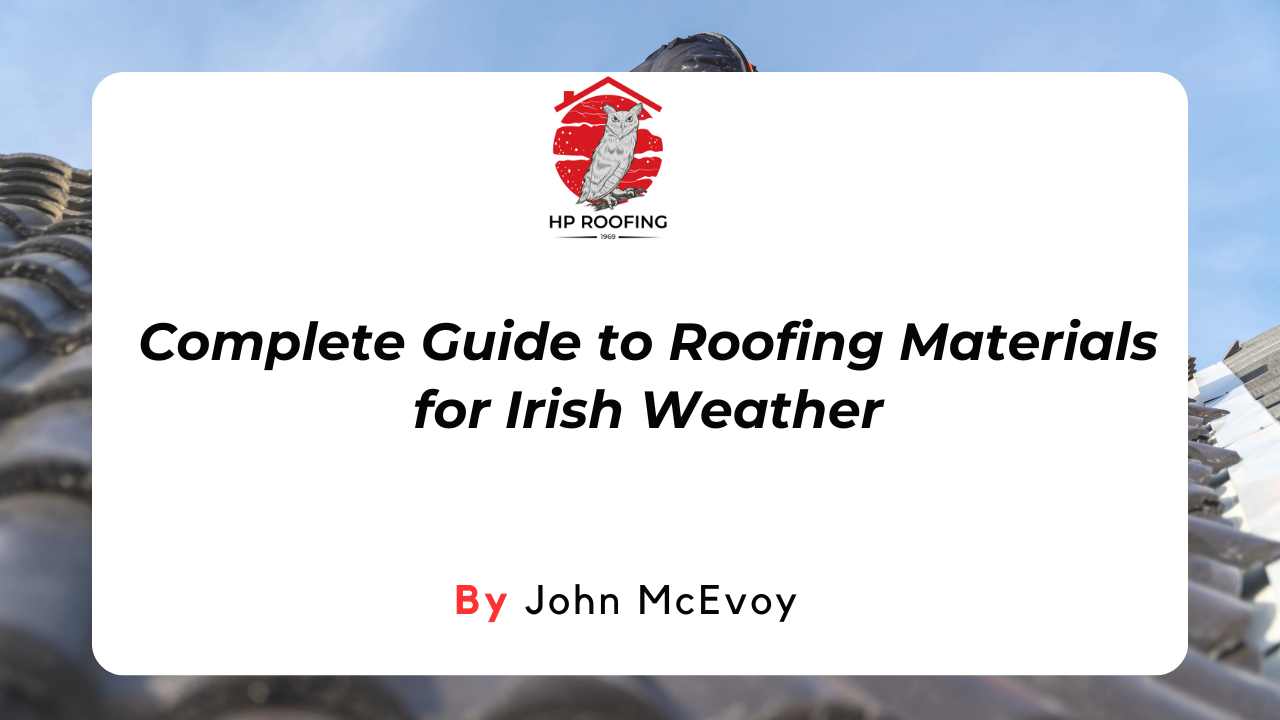A mysterious drip, a tell-tale stain, a peculiar smell—signs that your roof leaks can often be subtle until they're glaringly obvious. And let's face it, roof leaks rarely choose a convenient time to show themselves, with heavy rain usually being the unwelcome revealer.
This post will dive deep into the causes of roof leaks during heavy rain, helping you understand, identify, and address the problem.
Top 10 Causes of Roof Leaks During Heavy Rainstorms
1. The Hidden Damage of Poor Flashing Quality
Flashing is a thin material, typically aluminium or galvanised steel, installed at every intersection or projection on your roof to deflect water from vulnerable areas.
These spots include the areas around chimneys, skylights, and dormer windows where different surfaces meet. When the flashing is of poor quality or damaged, water can infiltrate your roof during heavy rain, leading to leaks.
2. The Fragmented Guardians: Missing or Broken Roof Tiles
Your roof slates or tiles are the primary barriers between the elements and your home's interior. When these components are missing or broken, they leave your roof vulnerable to water ingress. Water can seep into the gaps left by missing tiles or infiltrate the underlay through cracked tiles, leading to leaks.
3. The Silent Adversary: Age
Everything has a lifespan, including your roof. Over time, roofing materials can degrade due to exposure to weather elements, leading to brittleness, erosion, or loss of waterproofing properties. An aged roof may also have loose fixtures or eroded sealing, making it more susceptible to leaks during heavy rainfall.
4. The Double-Edged Sword: Skylights
Skylights, though aesthetically pleasing and useful for bringing natural light into your home, can also be a source of roof leaks if not properly installed or maintained.
Improper installation could lead to gaps around the skylight frame, while lack of maintenance could result in worn-out seals. Both scenarios can allow water to infiltrate your roof during a heavy downpour.
5. The Troublesome Chimney
Your chimney is a potential leak source, specifically, the area where it connects to the roof. The flashing that seals this junction could be poorly installed, damaged, or worn out over time, resulting in a weak spot that allows water to penetrate your roof during a storm.
6. When Good Intentions Go Wrong: Incorrect Materials
Every roof has a specific pitch, and using the incorrect materials for your roof's pitch can lead to issues. For instance, certain types of tiles or shingles are better suited for steeply pitched roofs, while others are better for low-pitched or flat roofs.
Using the wrong materials can lead to ineffective shedding of water, thus increasing the risk of leaks.
7. A Series of Unfortunate Events: Clogged Gutters
Gutters are designed to channel rainwater away from your home. However, if they're clogged with leaves, twigs, or other debris, they can overflow during a heavy rainstorm. This overflow can seep into your roof or home's walls, leading to leaks.
8. The Beneath-the-Surface Issue: Damaged Roof Underlay
Roof underlay, or roofing felt, is a secondary barrier against water ingress. If your tiles or shingles fail to repel water effectively, the underlay deflects the water and guides it into the gutters. However, if the underlay is damaged, water can seep into your roof structure, resulting in leaks.
9. Plumbing Leaks: The Invisible Threat
While not directly related to your roof's external structure, plumbing leaks in your attic can contribute to roof leaks. Broken, damaged, or ageing pipes can leak water, which can infiltrate your roofing structure and mimic the signs of a roof leak.
10. The Unseen Damage: Loft Condensation
Condensation in your loft can lead to a damp environment, promoting mould growth and damaging the wood and insulation in your roof over time.
If not adequately addressed, this moisture can deteriorate your roof's structural integrity, leading to leaks. This issue is often exacerbated during periods of heavy rain when the humidity levels tend to be higher.
Quick Fixes: How to Temporarily Repair a Leaking Roof from Inside
1. Catch the Drip: Use a Bucket or Waterproof Container
If water is dripping from your ceiling, the first quick fix you can employ is to use a bucket or any waterproof container to catch the water.
This strategy not only prevents water from spreading and causing further damage to your interiors but also provides a quick visual indicator of the intensity of the leak, which can be helpful information for repair professionals.
2. Creating a Drain Path: Employ a String or Wire
Sometimes, the leaking water doesn't conveniently drip straight down. It may follow a path along your ceiling before eventually dripping onto your floor, causing wider spread damage. In such cases, a smart trick is to attach a string or a piece of wire to the leaking spot.
Water is more likely to follow this string or wire and flow straight into your bucket, keeping the surrounding areas dry.
3. Sealing the Deal: Using Waterproof Tape or Sealants
If the leak is small and you can access it, waterproof tape or a sealant is an excellent temporary solution. Waterproof tape sticks well to various surfaces, creating a moisture barrier.
If you're using a sealant, apply it liberally around the leak to ensure water can't seep through. Please note this is a temporary fix; professional repair will still be necessary to ensure the leak doesn't recur.
4. Cover Up: Use a Waterproof Tarp
You can use a waterproof tarp to cover the affected area for more extensive leaks. This is particularly effective if you can access the attic and place the tarp directly under the roof leak.
A sizable tarp can catch a large amount of water, reducing the immediate impact of the leak until a professional can perform a proper repair. This can be especially useful if you're waiting out a rainstorm before repairs can begin.
Remember, this is just a temporary solution; leaving a leak untreated can lead to serious structural issues in the long run.
The Proactive Approach: Regular Roof Inspections
The idea that "prevention is better than cure" holds particularly true when it comes to maintaining the structural integrity of your home, and the roof is no exception.
Regular roof inspections can seem daunting, but they're crucial for uncovering potential issues that might otherwise remain hidden until they escalate into severe, often costly problems.
The Ideal Frequency
As a rule of thumb, roofs should ideally be inspected twice a year—once in late spring and again in early autumn. This bi-annual schedule allows you to assess any winter damage and prepare for harsh weather ahead, respectively.
However, additional inspections may be necessary after significant weather events like heavy storms or high winds, which can cause immediate and noticeable damage.
Looking Out for Red Flags
During an inspection, you should look for signs of physical damage, such as missing, cracked, or damaged tiles or slates. These are your roof's first line of defence against the elements, and any disruption in their arrangement could lead to leaks or more significant structural issues.
Seeking Professional Help
While a DIY approach can help you spot obvious issues, hiring a professional roofing contractor for regular inspections is always recommended. They have the necessary training, experience, and tools to safely assess your roof and identify any potential problems that might not be immediately apparent to the untrained eye. Contact HP Roofing for a free quote.
Nailing the Right Choice: Tips to Hire a Top-Notch Roofing Contractor
- Do your research: Look for licensed, insured, and experienced contractors.
- Check online reviews and ratings.
- Ask for recommendations from friends, family, or neighbours.
- Request multiple quotes for comparison.
- Always ask for a written contract detailing the scope of work and costs.
Wrapping Up the Roof Leaks Saga
Understanding the causes of roof leaks during heavy rain is your first step towards a secure, leak-free home. By identifying these issues early and seeking professional assistance, you can effectively protect your home from the damaging effects of water intrusion.
Contact us today for a thorough, professional inspection, and let us help you ensure that your home remains safe, dry, and leak-free, even in the heaviest of rains.
















